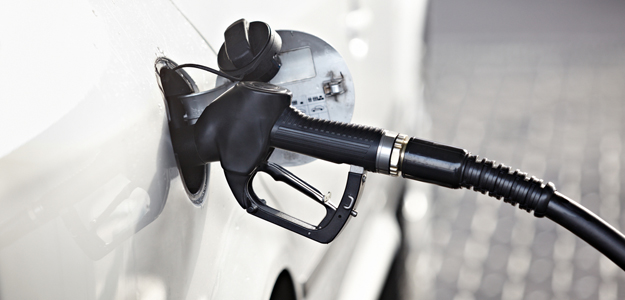
In the beginning, there were horses and buggies (and buggy whip makers). Then, around 1860, some clever folks figured out that mixing oil-derived “gasoline” with air and stuffing both into a closed space and lighting it with a spark(plug) would result in a big BOOM. If contained, all that energy could drive a piston inside an engine, which if properly connected to a buggy’s wheel, would make the whole assembly move around under its own power, accompanied by a lot of noise, smoke and terrified onlookers.
The car, or “automobile,” was born and the buggy whip industry hasn’t been the same since.
Over 150 years later, the same basic mechanics, albeit greatly refined, continues to power the millions of cars, motorcycles, trains, airplanes, lawn mowers, cruise ships and bar stool racers around the globe. But how does the gas in your tank and the air blanketing our little planet get together inside your car’s engine? Currently, there are three primary ways, one of which is starting to disappear.
Carburetors (a.k.a. “carbs,” and no, not the kind that’s in your waffles)
From the beginning, engines used a complicated device called a “carburetor” to mix air and gas together in the proper amounts before it headed into the combustion chamber inside an engine cylinder. Carburetors use a series of tiny orifices, passages, springs, cylinders and probably some black magic to accomplish this and for nearly 100 years, they dutifully got our VW Beetles, Benzes, Honda Trail bikes and Mustangs around with general reliability.
But even with decades of refinement, carburetors are still inefficient, wasteful, environmentally unfriendly and overly complicated, let alone having to learn all that black magic to work on them. Also, when you drive your vehicle somewhere that is at a drastically different altitude, they tend to work even more poorly. Mechanics hate them and that’s why it costs a fortune to get them worked on.
Because of their inefficiency, no modern cars use carburetors. However, for simple engines (weed trimmers, lawnmowers, pressure washers, bar stool racers and such), they are still widely used since they require no electrical power to operate. But eventually, they will likely disappear from use altogether, except from vintage machines and black magic shops.
Electronic Fuel Injection (EFI)
Recognizing the limitations of carburetors, in the mid-1900s vehicle designers developed a new way to get gas into an engine using a system called “fuel injection.” Tack on a small computer or other electronics for regulation of the system and you have “Electronic Fuel Injection,” or EFI. It is not pronounced “Effie.” It’s E-F-I.
This fancy-sounding acronym describes a system of delivering fuel to an engine using a pump that pressurizes the fuel so that it can be “injected” into the airstream going into the engine in very precise amounts, upping efficiency and cutting down on wasted fuel (and icky emissions).
Sensors in the exhaust and in the air-intake system constantly measure the system’s needs and efficiencies, and the computer/electronics constantly adjusts the amount of fuel being sent into the engine. The system can also correct for differences in altitude so the vehicle performs pretty much the same no matter where it is. However, modern EFI systems require electrical power to work and if the system gives out for some reason, you’ll probably need to get towed back to civilization, although total failures of EFI systems are quite rare. Pretty much every car made today comes with EFI – or DFI (see below).
Also, with the advent of the computer age, consumers can now buy software and hardware to hack make adjustments to some fuel injection systems for more performance, although doing this wrong can result in decreased performance, lower gas mileage, a damaged engine and an F at the annual DEQ test. So consider yourself warned.
Direct Fuel Injection (DFI)
A close cousin of EFI is DFI. The systems are essentially identical but instead of pumping gas into the air before it goes into the engine as EFI does, DFI systems pump a very precise amount of fuel directly into the combustion chamber inside the engine where it then mixes with air just before being set alight by the spark plug. DFI is even more efficient that EFI, resulting in more power, less waste and cleaner exhaust gases. DFI is relatively new technology but it is beginning to show up in more vehicles as the system evolves and comes down in cost. No black magic is required.
And what about that “octane” rating thing?
It used to be that high-performance or big-engined luxury cars had to have “premium” gas or they would run poorly – and possibly be damaged by detonation (also known as “knock”), which is when the gas/air mixture explodes before it should inside the engine’s cylinders. EFI and DFI have pretty much solved that problem. Carbs, not so much.
Gas typically comes in three grades: Regular, Plus, and Premium (also called Super or any other number of idiotic marketing monikers) and with octane ratings from 85 to 93 or so. The higher the octane rating, the more energy and knock avoidance goodness the fuel contains. But once fuel injection systems matured, it became less of a big deal what you pumped into your car. The bottom line is this: unless you are piloting a six-digit supercar that the maker specifies should only drink the most expensive grade of liquid dinosaur, you can now run most any car on “regular” gas and your car’s computerized fuel and engine management systems will make the appropriate adjustments to protect your engine.
If you do have a high-performance car and are heading for a track day or some backroads shenanigans, filling up on Plus or Premium can put a bit more pep in your car’s step.
Otherwise, you’re just blowing extra dollars out the tailpipe.


